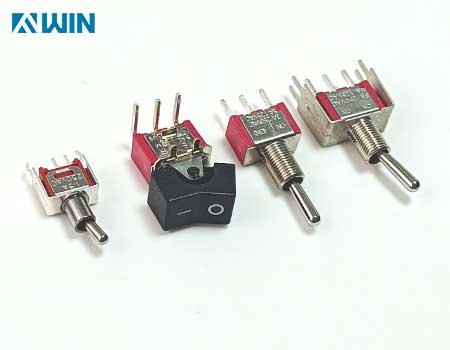Toggle switches are integral components in various electronic devices, including synthesizers, due to their versatility and reliability. Understanding the different specifications of toggle switches is essential for selecting the appropriate switch for a given application. These specifications encompass several key aspects:

1. Electrical Specifications
Contact Rating: This defines the maximum current and voltage the switch can handle. For instance, some toggle switches are rated for 6A at 125VAC or 3A at 250VAC, suitable for various applications
Insulation Resistance: Indicates the resistance between the switch's terminals and its frame, ensuring minimal leakage current. Values like 1,000MΩ are common, ensuring safety and performance.
Dielectric Strength: Measures the switch's ability to withstand high voltage without breakdown, typically around 1,000VRMS at sea level.
2. Mechanical Specifications
Actuator Type: The part of the switch that the user interacts with, such as a lever or toggle. Actuators can vary in length and material, affecting the switch's ergonomics and suitability for specific applications.
Mounting Style: Includes panel mount, PCB mount, or surface mount, determining how the switch is installed in a device. Panel-mounted switches are common in synthesizers for user accessibility.
Terminal Type: Refers to the connection method, such as solder lugs, quick-connect tabs, or screw terminals, influencing ease of installation and maintenance.
3. Environmental Specifications
Operating Temperature Range: Specifies the temperatures within which the switch operates reliably, often between -30°C to 85°C, ensuring functionality in various environments.
Ingress Protection (IP) Rating: Indicates the level of protection against dust and moisture. For example, an IP64 rating means the switch is dust-tight and protected against water splashes.
4. Contact Configuration
Pole and Throw: Defines the number of circuits controlled by the switch (poles) and the number of positions each pole can connect to (throws). Common configurations include:
SPST (Single Pole Single Throw): Controls one circuit, switching it on or off.
SPDT (Single Pole Double Throw): Controls one circuit, switching between two outputs.
DPDT (Double Pole Double Throw): Controls two independent circuits, each with two output options.
These configurations determine the switch's functionality in a circuit.
5. Physical Dimensions
Size: Toggle switches come in various sizes, including sub-miniature, miniature, and standard, affecting their suitability for different applications. Sub-miniature switches are ideal for compact devices, while standard sizes are used where space is less constrained.
Actuator Length: The length of the toggle lever can vary, influencing user interaction and the switch's placement within a device.
6. Special Features
Illumination: Some toggle switches include built-in lights, aiding visibility in low-light conditions and providing status indication.
Locking Mechanism: Prevents accidental operation by requiring a deliberate action to toggle the switch, enhancing safety in critical applications.
Momentary or Maintained Action: Momentary switches return to their default position when released, while maintained switches stay in their set position until toggled again. This characteristic is crucial in applications requiring temporary or continuous connections.
Understanding these specifications is vital for selecting the appropriate toggle switch for a specific application, ensuring compatibility, safety, and optimal performance.
Contact: Ms Bella
Phone: +86-15999819066
Tel: +86-0769-89615395
Email: Bella@fvwin.com
Add: No 25, Xinfeng East Road, Shijie Town, Dongguan, GD, CN, 523000
We chat
